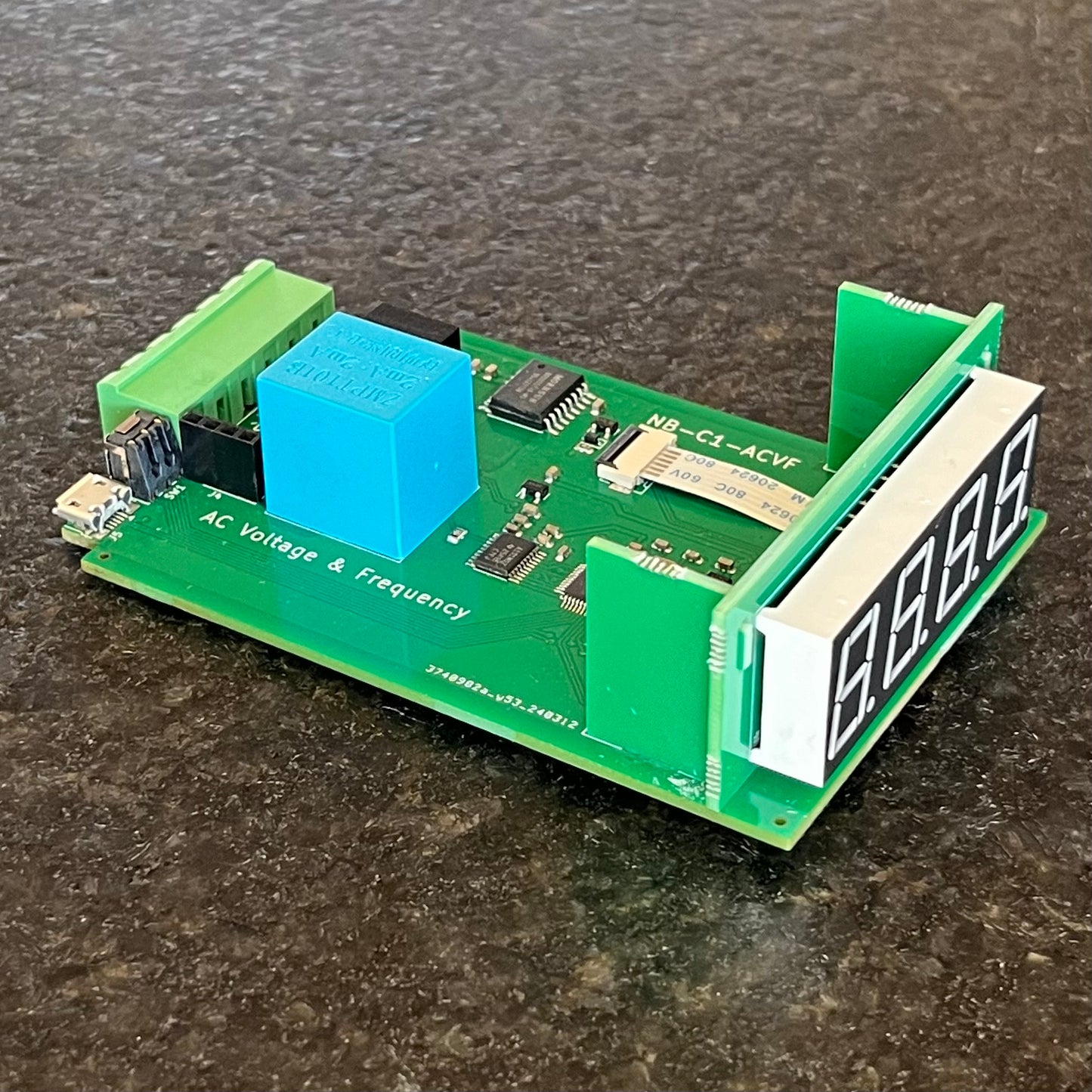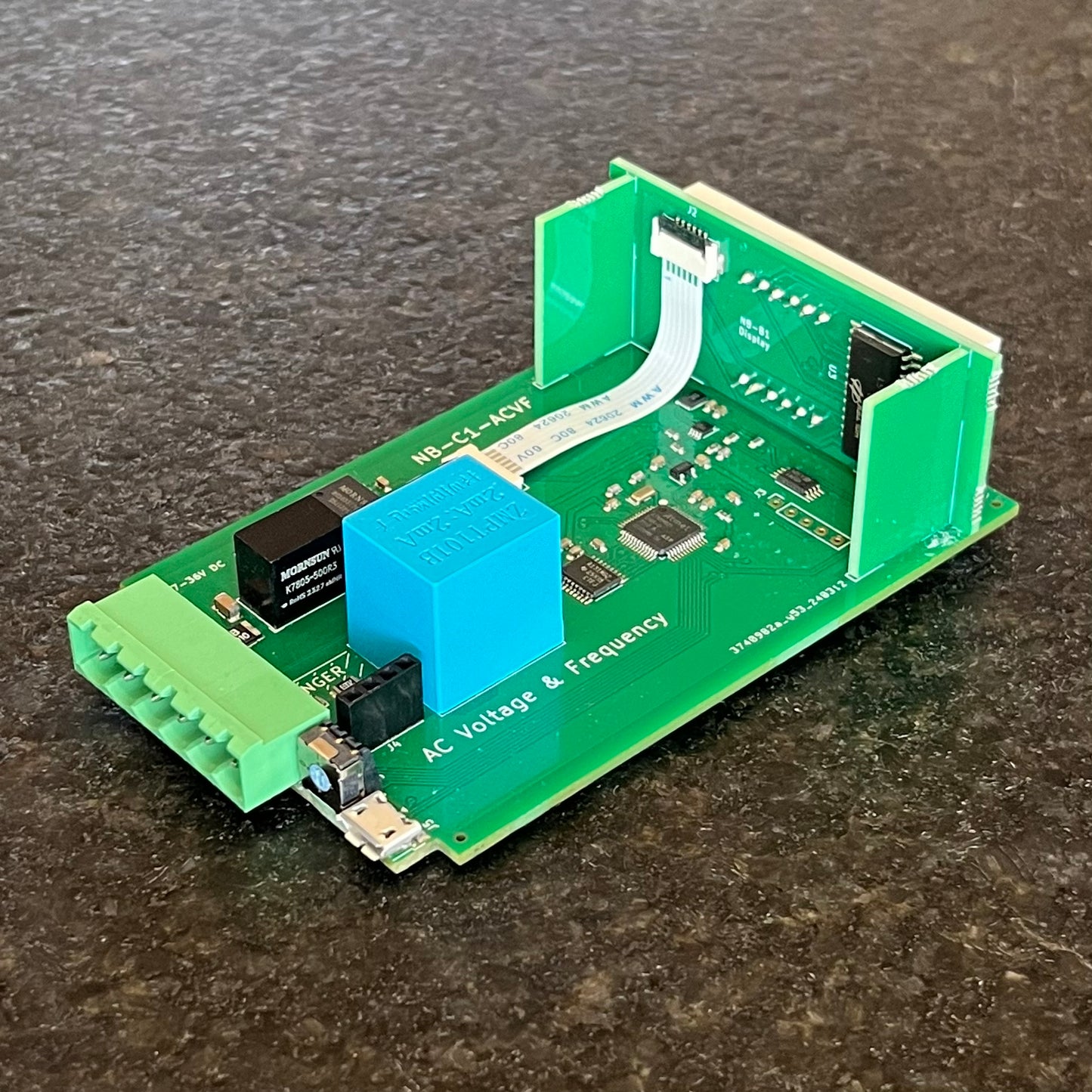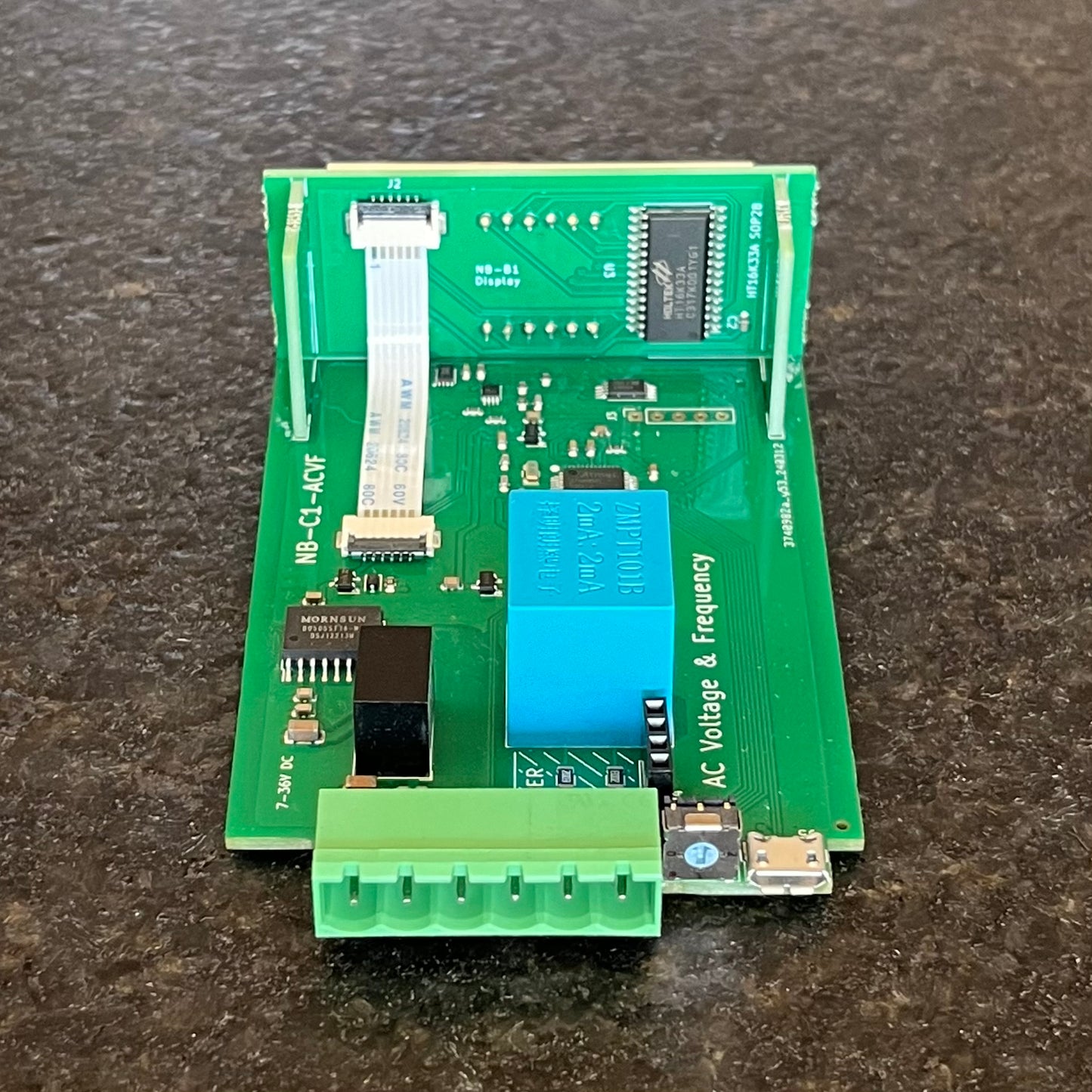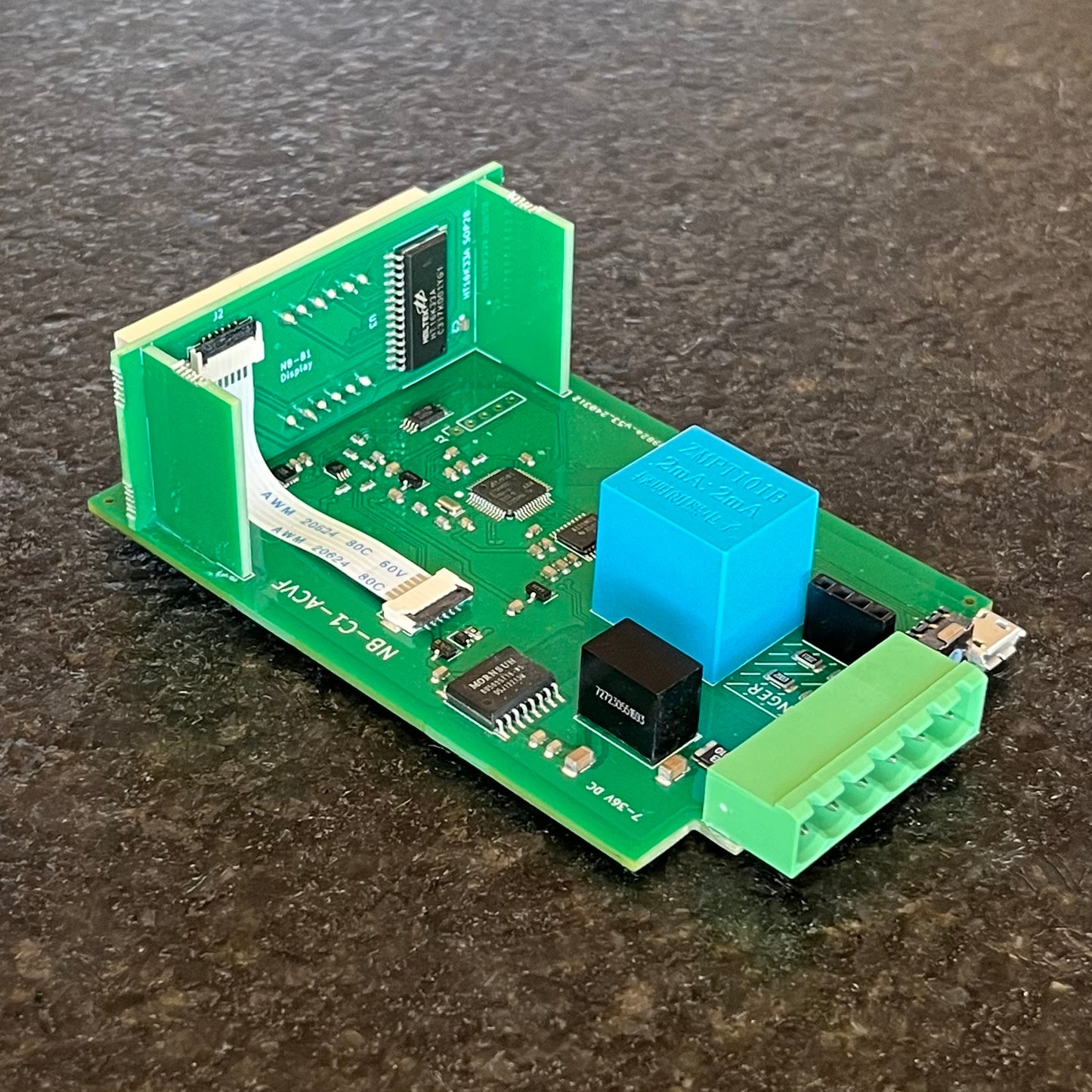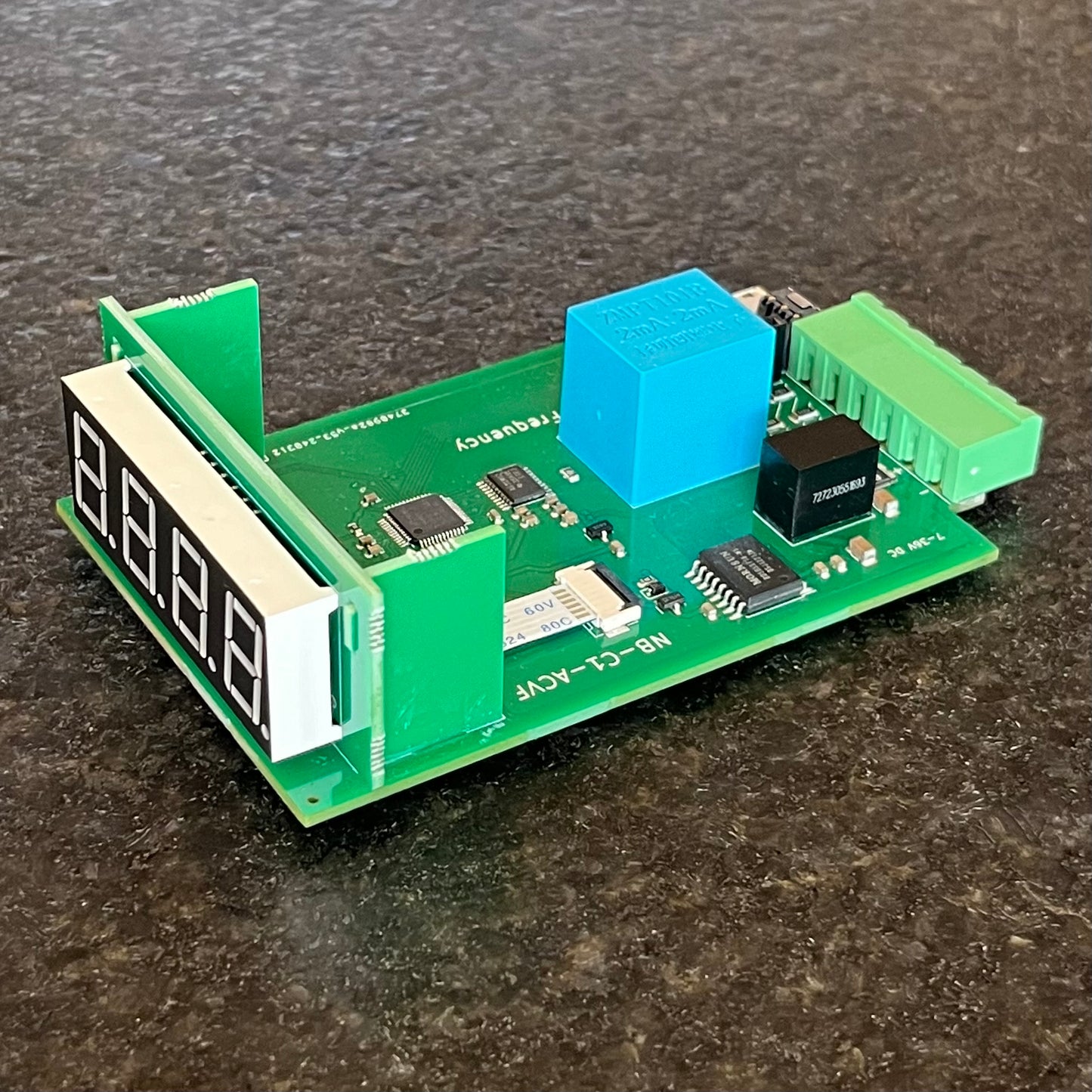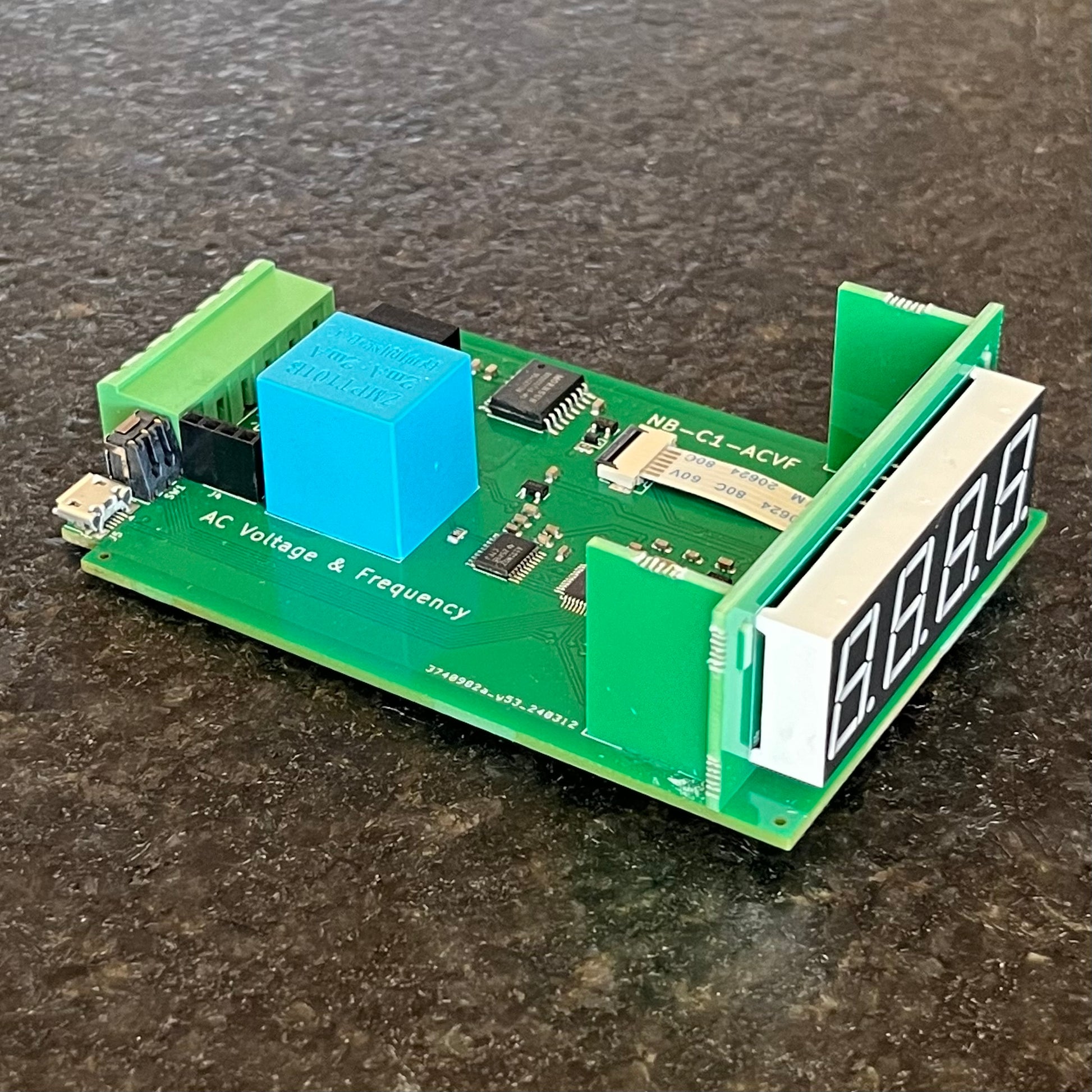NordyBits Limited
AC Voltmeter - 2025
AC Voltmeter - 2025
Model NB-C1-ACVF
AC Voltmeter and Frequency Meter circuit board that fits inside a Chi Tai DM-7xx case.
Suitable for 12 volt and 24 volt boats. Works with a 7V to 36V supply.
Power consumption
Supply 13.80V 27.60V
----------------------------------------------------
AC Voltmeter C1 0.30W 0.30W
Chi Tai AC Voltmeter 2.51W 2.51W
Functions
The functions are selected by the small rotary switch at the rear or they can be programmed by USB using a PC or Mac.
0 - Programmable functions
1 - Voltmeter 0 V - 300 V
2 - Voltmeter 0.0 V - 300.0 V
3 - Frequency meter 30.0 Hz - 100.0 Hz
When acting as a voltmeter, the frequency can be displayed using the touch sensor at the front or with a push button switch connected to the two centre contacts on the rear green plug. The form factor and peak factor of the AC wave can also be displayed.
Programmable Functions
Plugging a PC or Mac into the micro USB socket at rear of the board allows configuration of:
- Display brightness
- Function and decimal places
- Alert if the voltage falls outside of the selected range
- Calibration of the voltmeter
- Adjust the touch sensitivity
Installation Instructions
Design
The voltmeter calculates the RMS voltage and is accurate to 0.1 volt at 260 volts. It is supplied calibrated to a Fluke voltmeter. Calibration is digital and can be adjusted using the USB software.
The AC voltmeter has been designed to ensure that there are two complete layers of isolation between the AC and DC inputs. The incoming AC is fully separated from the meter circuit by a transformer which provides 4,000 volts of isolation. The meter circuit is then fully separated from the DC supply by a dedicated isolation chip which provides another 600 volts of isolation. The AC circuitry is kept to a minimum and there is 7mm clearance between the AC and the meter circuit. The live (hot) and neutral tracks maintain 5mm of separation from each other. The AC tracks on the PCB are only 0.25mm wide so that they cannot carry any more current than is needed for sensing the voltage. The DC supply has a self resetting 100mA fuse built in.
By contrast, in the Chi Tai AC voltmeter, the AC neutral is directly connected to the meter's ground. The meter's ground is present throughout the circuit and is only separated from the DC supply by a transformer. The case of the transformer is connected to the AC neutral. The live (hot) and neutral pass within 0.7mm of each other on the PCB. The tracks are thick enough to carry a significant current.
Oscilloscope Function
The NB-B1-ACVF has a very primitive oscilloscope function that allows you to see the shape of the AC sine waves on a laptop plugged into the micro USB socket on the rear of the board. This can help to diagnose issues and to see the impact of non linear loads on your generator or inverter. The output is purely to see the wave shape, the vertical scale does not relate to voltage.
Shore power, no load.
A standard sine wave with a slight clipping of the peaks

Generator, no load.
The effects of the automatic voltage regulator are visible.

Generator with water heater load.
A cleaner sine wave.

Generator with 50A battery charger.
The non linear load is only 10% of the generator capacity and already distorting the output.

Couldn't load pickup availability
